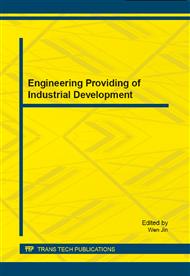[1]
http: /baike. baidu. com/view/11090. htm?fr=ala0_1_1.
Google Scholar
[2]
Bingan Wu, The Protection of "cultural space" about Intangible Cultural Inheritance, Qinghai Social Sciences, Jan. 2007, pp.33-36, 41.
Google Scholar
[3]
Cheng Yang, Research and Design of Ontology-Based Digital Museum Model of Immovable Cultural Relic, 2007, Master Degree Thesis, Zhejiang University.
Google Scholar
[4]
Guoxin Tan, Chuanming Sun, Zheng Zhong. Knowledge Representation of Funeral Dance, based on CIDOC CRM. 2009 Second International Symposium on Knowledge Acquisition and Modeling, 2009, pp.39-42.
DOI: 10.1109/kam.2009.163
Google Scholar
[5]
http: /en. wikipedia. org/wiki/Principal_component_analysis.
Google Scholar
[6]
Dongming Lu, Yunhe Pan. Digital preservation for heritages: technologies and applications, 2009, 24-25.
Google Scholar
[7]
Dongming Lu, Yunhe Pan. Digital preservation for heritages: technologies and applications, 2009, 140-141.
Google Scholar
[8]
Allie, Toward a pragmatic taxonomy of knowledge maps : classification principles, sample typologies and application examples, Proc of the 10th International Conference on Information Visualization, 2006, 337-348.
DOI: 10.1109/iv.2006.111
Google Scholar
[9]
Polanyi, Fernndez LpezM, 2003, WebODE in a nutshell Ⅱ. AI Magazine , 24(3): 37-48.
Google Scholar
[10]
Nonaka, Dieter Fensel, Frank Van Harmelen, 2003, Towards The Semantic Web-Ontology-Driven Knowledge Management. West Sussex, England; John Wiley&Sons Ltd, 364-378.
DOI: 10.1002/0470858060.ch15
Google Scholar
[11]
Nonaka, Takeuchi, 2006, Developing an OWL Ontology for E-Tourism. In: Semantic Web Services, Processes and Applications. Springer, Heidelberg, 137-143.
Google Scholar
[12]
Hedlund eta., 2004, Creating a Virtual Audience for the Heritage of Ancient Theatres and Odes, VSMM, 537-441.
Google Scholar
[13]
Inkpen, Miguel-Angel Sicilia, 2008, On Linking Cultural Spaces and e-Tourism: An Ontology-Based Approach. M.D. Lytras et al. (Eds. ): WSKS, 237-240.
Google Scholar
[14]
Badaracco, Sophia Ananiadou, Katsumori Matsushima, 2006, Terminology based Knowledge Mining for New Knowledge Discovery, 74-88.
Google Scholar
[15]
Parry R., 2005, Digital Heritage and the rise of theory in museum computing, 20: 333-348.
Google Scholar
[16]
The Intangible cultural heritage in China, http: /www. ihchina. cn/main. jsp.
Google Scholar
[17]
http: /tech. 163. com/04/1028/11/13PD93VB0009rt. html.
Google Scholar


